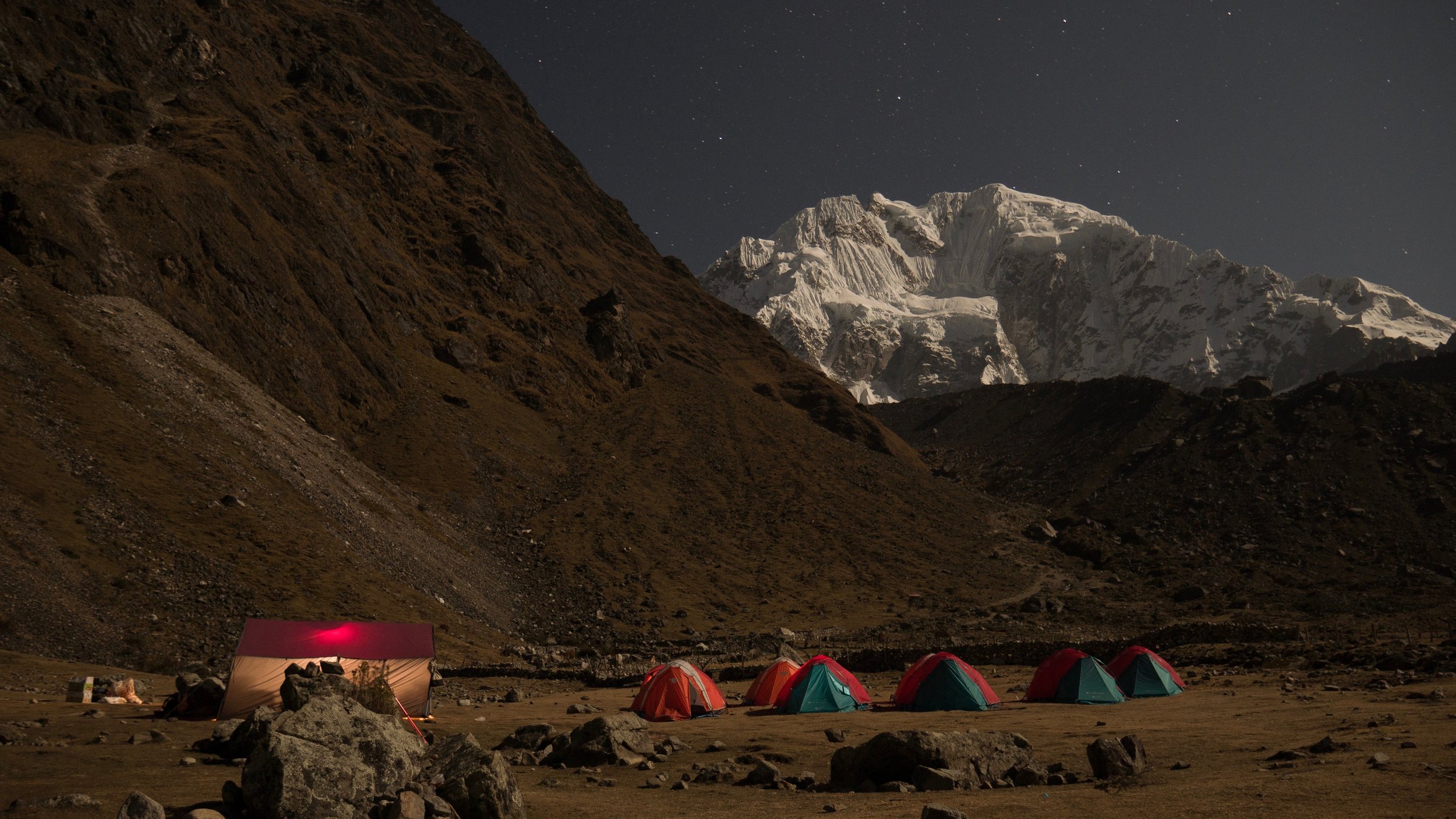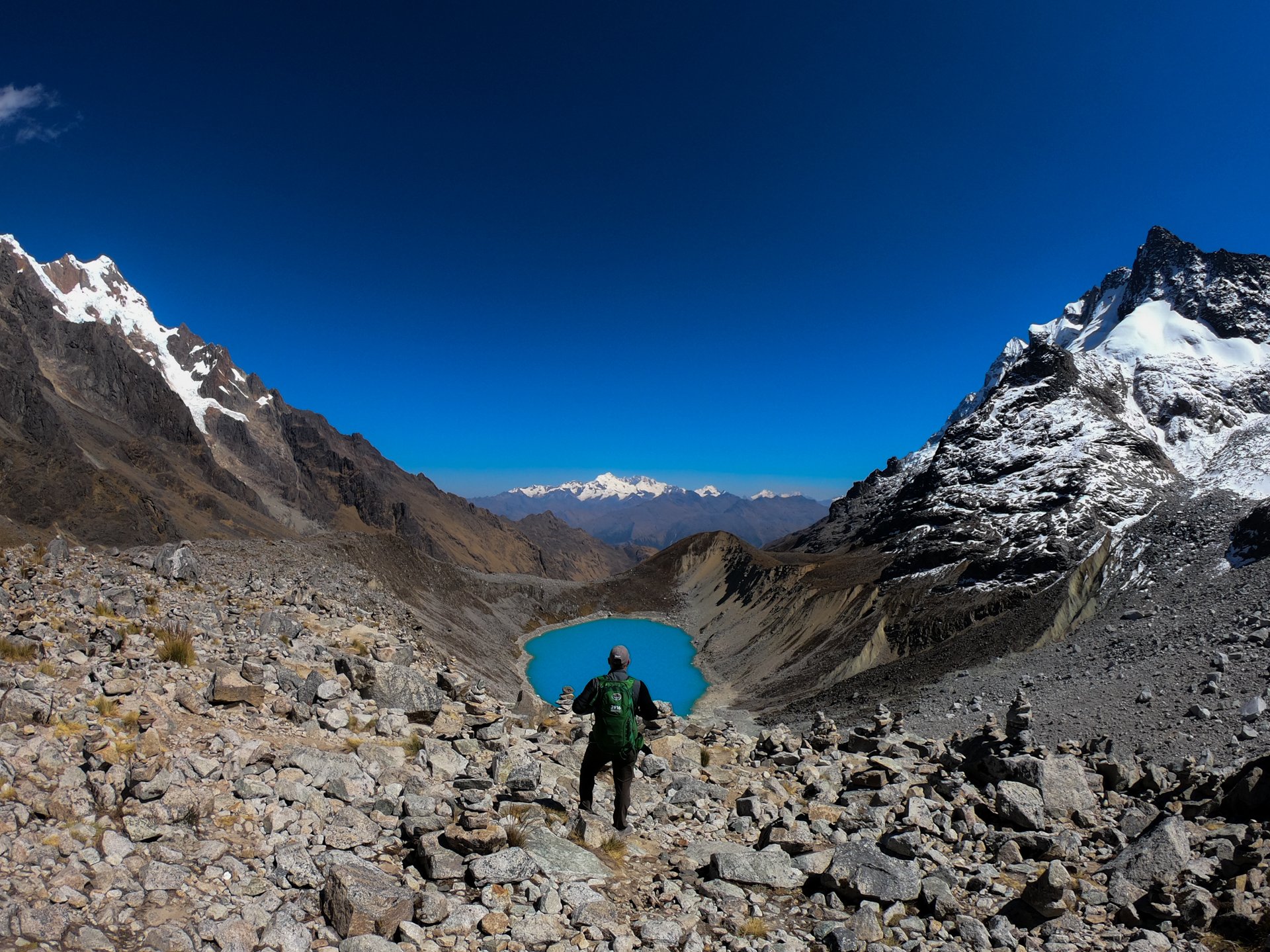Salkantay, Step by Step
Taming the invincible.
Salkanty, Perú’s 12th highest peak, gets its name from the Quechua word, “sallqa”, meaning untamed, uncivilized and invincible. Its relative proximity to Machu Picchu (to the north) has made this prominent peak, and its surrounding Inca roads, a popular alternative to the often crowded Inca Trail.
This is the trek we tackled over the course of four arduous – but highly rewarding – days on our way to the Sanctuary at Machu Picchu.
September 2019, images/text: Martin Fernandez
It’s easy to understand why the ancient Incas considered this “Apu” (mountain/lord) one of their principal deities. Salkantay, as viewed from Machu Picchu, lies directly beneath the Southern Cross when the constellation is at its highest point in the sky during the rainy season. For this reason, the Incas associated the snowy peak with the concepts of rain and fertility.

ABOVE: Salkanty’s majesty prominently displayed during a clear Andean night. The group’s first campsite. Photo: Ariana Fernández/Martin Fernández.
Our trek began far from Salkantay’s snowy peak in Cusco’s Sacred Urubamba Valley with a “shakedown” hike from the popular Moray Ruins to the Maras Salt pans.
Moray’s ruins are a series of depressions made up of circular terraces that are believed to have been used as an agricultural experimental center by the Incas. Farmers brought soils and crops from different areas of the empire to test how each would fair at various altitudes. This experimentation allowed the empire to provide food to all the empire’s inhabitants during times of need. The largest of the depressions was nearly 100′ deep and, like other locations throughout the region, Moray possessed a complex system of irrigation channels to ensure all crops were well irrigated.
The largest set of terraces at the Moray ruin complex is nearly 100′ deep (30m).
From Moray we ventured to the town of Maras from which we descended along an ancient Inca road to the famous Maras Salt Ponds. Las Salinas have been in use since well before Inca times, and continue to provide local salt harvesters with natural Andean salt. Highly salted water emerges from a subterranean spring and is carefully redirected via an intricate system of channels to nearly 5,000 small ponds which have been meticulously constructed over a system of terraces.
Today, the ponds are owned by local families who have cooperated over several generations to ensure the quality of the salt is maintained.

The Salinas in Maras.
ABOVE: The Salinas in Maras are meticulously maintained by a community cooperative made up of local families. The ponds have been passed on from generation to generation since pre-inca times.
ABOVE: Walking from Moray to Maras gave our group the opportunity to meet and interact with local community members, including an Andean woman working her crops, and an Andean laborer ensuring irrigation channels were clear of debris.
With the Valley hike behind us, our group ascended (via transport) to Soraypamapa (12,631′), the starting point of our trek. From there, the group hiked further up to visit Humantay Lake (below) before descending and ascending once again to the first campsite of the trek.
As our adventure progressed, we were more and more wrapped in the beauty of Pachamama (mother earth). It really is quite easy to understand why the Inca revered Pachamama so much and why they paid homage to her in their every day lives. It was quite simple to put aside any discomfort by simply looking around and respecting the landscape that so gracefully absorbed each and every one of our steps.

ABOVE: Humantay Lake.
Day two proved to be the most difficult, yet the most rewarding of the trek. After waking very early (4:30 am) and consuming a hearty breakfast, our band of adventurers set out for the longest hike of the trek, a 12 mile odyssey that would see us ascend another 2,000′ before descending nearly 4,000′ to campsite number two in the settlement of Chaullay.
Along the way the group would cross over Salkantay Pass (15,000′), visit an even more impressive lagoon (Salkantay Lake), and descend into the beginnings of the Andean Amazon.
ABOVE: Day two of our trek proved to be the most difficult, the group ascended nearly 2000′ to Salkantay pass before descending nearly 4,000′ to the beginning of the Andean Amazon.

ABOVE: One of the highlights from day two was visiting the Salkantay Lagoon high above 15,000′ before beginning the descent into the Andean jungle. Photo: David Villena.
Tired, but undeterred, the group settled in for the night to tackle day three, a shorter yet even more spectacular hike than the day before.
After departing the settlement of Chaullay, the group began a descent along a narrow trail that paralleled the Santa Teresa River on its way to Sahuayaco.
Despite walking nearly as much as the previous day, the hike was less arduous due to the diminishing altitude and the downhill nature of the walk. Along the 12 mile stretch the group had the chance to visit several community coffee plantations, and have an opportunity to sample some of the locally grown fruits and vegetables (below), as well as pick up any additional necessities.
ABOVE: Despite the remote location, hikers can often find some key necessities along the way.
Our final day would be the easiest and most rewarding. The hike along Peru Rail’s track to Machu Picchu Pueblo (Aguas Calientes) led us directly to our hotel and a much needed hot shower.
After cleaning up and resting, the group convened for dinner at a local restaurant and set out to plan the next day’s visit to the Sanctuary, the final day of our adventure.
For most this would be their first visit to Machu Picchu, while for others in the group it would become their second, or even third visit to the Sanctuary. Most of the group selected to climb Huayna Picchu – one last challenge – to get a bird’s eye view of the sanctuary before heading back down to Aguas Calientes for the train ride back to the Valley, and ultimately the trip back home.
For all, for sure, it was an epic adventure and one that will remain in their memories for a long time to come.

ABOVE: Our fearless group tamed Salkantay and reaped the rewards with a visit to Machu Picchu.
This journal entry is a “summary” compilation of entries I made in my Moleskine travel journal. Whenever I travel I bring it along for the ride and jot things down so I don’t forge them. I also bring with me a small Digital Bluetooth Printer so I can print out selected images, some of the ones you see here. The photo paper used on these little Zink printers has an adhesive back so that I can easily peel and paste it in my journal.













